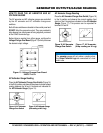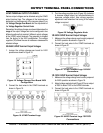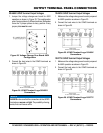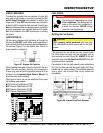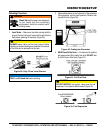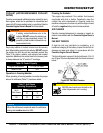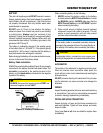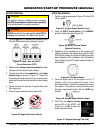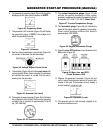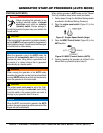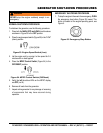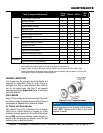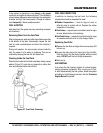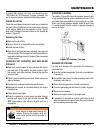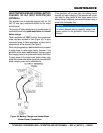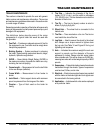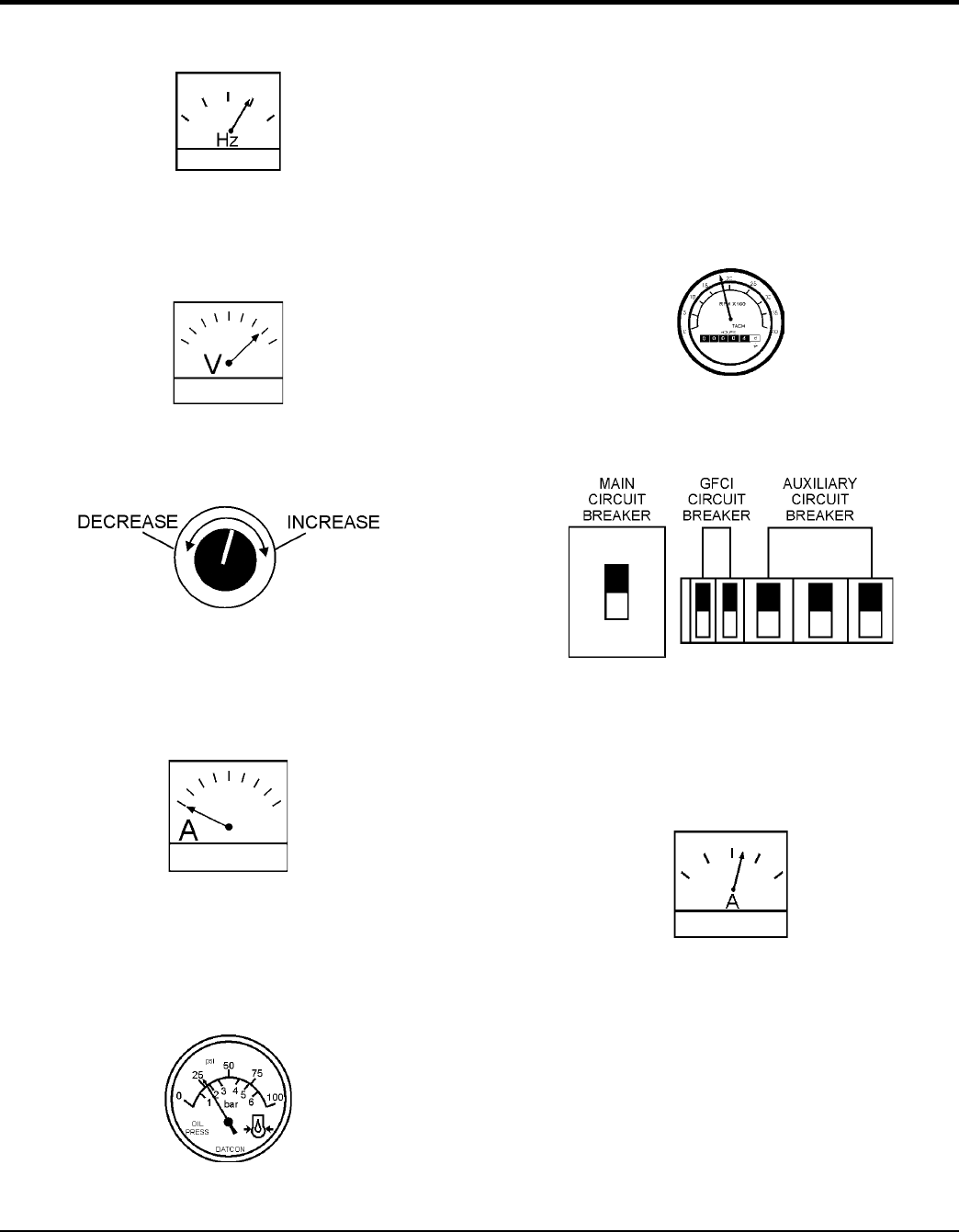
GENERATOR START-UP PROCEDURE (MANUAL)
6. The generator’s frequency meter (Figure 42) should be
displaying the 60 cycle output frequency in
Figure 42. Frequency Meter
7. The generator’s AC-voltmeter (Figure 43) will display
the generator’s output in . If the voltage is not
within the specified tolerance,
Figure 43. Voltmeter
8. Use the voltage adjustment control knob (Figure 44)
to increase or decrease the desired voltage.
Figure 44. Voltage Adjust Control Knob
9. The ammeter (Figure 45) will indicate with
no load applied. When a load is applied, the ammeter
will indicate the amount of current that the load is
drawing from the generator.
Figure 45. Ammeter (No Load)
10. The engine oil pressure gauge (Figure 46) will indicate
the oil pressure of the engine. Under normal operating
conditions the oil pressure is approximately 28 to 85
psi. (193~586 kPa).
Figure 46. Oil Pressure Gauge
11. The coolant temperature gauge (Figure 47) will
indicate the coolant temperature. Under normal
operating conditions the coolant temperature should
be between 167°~203°F (75°~95°C) ().
Figure 47. Coolant Temperature Gauge
12. The tachometer gauge (Figure 48) will indicate the
speed of the engine when the generator is operating.
Under normal operating conditions this speed is
approximately 1800 RPM’s.
Figure 48. Engine Tachometer Gauge
13. Place the circuit breakers in the
position (Figure 49).
Figure 49. Main, Aux. and GFCI
Circuit Breakers (ON)
14. Observe the generator’s ammeter (Figure 50) and
verify it reads the anticipated amount of current with
respect to the load. The ammeter will only display a
current reading if a load is in use.
Figure 50. Ammeter (Load)
15. The generator will run until manually stopped or an
abnormal condition occurs.



